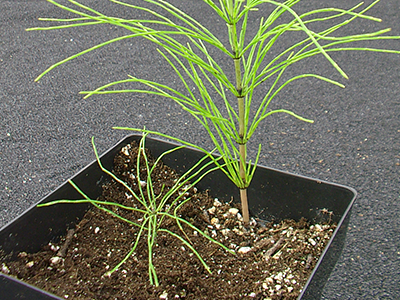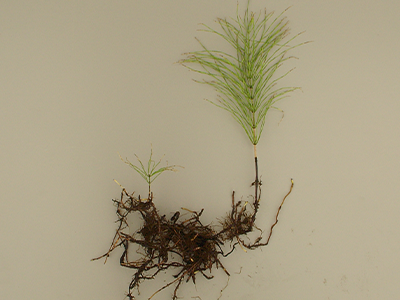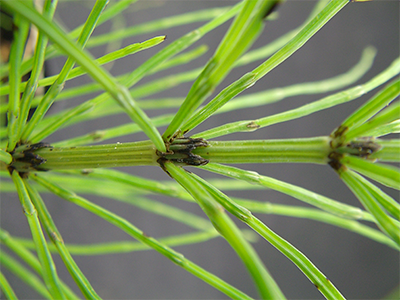The benefits of taking a program approach for weed management is being realized in soybean fields across Eastern Canada. The ability to start with a clean field and keep it clean sets soybeans up for success, and the greatest opportunity to reach their yield potential.
A program approach is a two-pass system for Enlist E3™ soybeans that uses pre-emergence residual herbicides with different modes-of-action followed by a post-emergence pass. For farmers dealing with horsetail, a program approach is an ideal solution. The two-pass solution targets horsetail shoots in early spring, as well as the green top growth that appears once those shoots die back.
Horsetail 101
Horsetail is a spore-producing plant that’s difficult to control. A perennial weed, field horsetail has two growth stages:
A perennial weed, field horsetail has two growth stages:
- Spore-bearing shoot – single stems, grey to brown in colour, topped by elongated spore-producing cones, emerging in early spring.
- Vegetative shoot – single-stemmed, leafless, branchy green plants emerging from late spring into early summer (and beyond) as the fruiting bodies die off.
It’s below ground, though, where horsetail really gains its staying power. Here, a network of tuber-bearing rhizomes spread widely and penetrate deep into the soil – up to one metre (3.5 feet) deep is quite common1. New shoots, both spore-bearing and vegetative, grow from the rhizomes.
This robust underground lifeforce is impossible to eradicate through direct means, but by repeatedly controlling top growth from season to season, it’s possible that it may lose energy and mass over time. However, it will likely never completely disappear because if a rhizome dies or is detached through cultivation or some other disturbance, the dormant tubers will activate to produce new plants2.
Controlling field horsetail takes a consistent effort, year after year, using both herbicide and cultural tools, such as mowing, to remove top growth. On the herbicide front, a two-pass approach is recommended – the first aimed at spore-bearing shoots and the second at vegetative growth.









